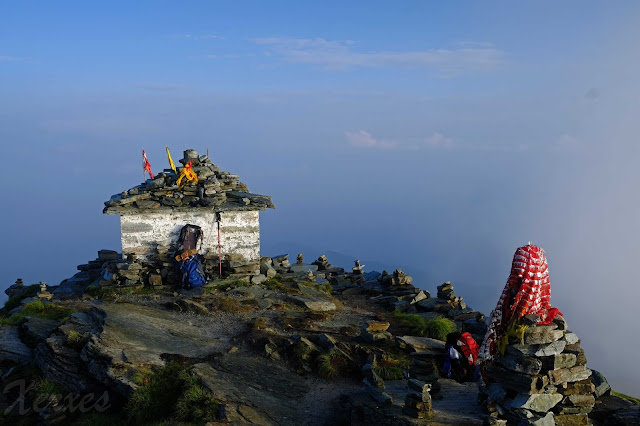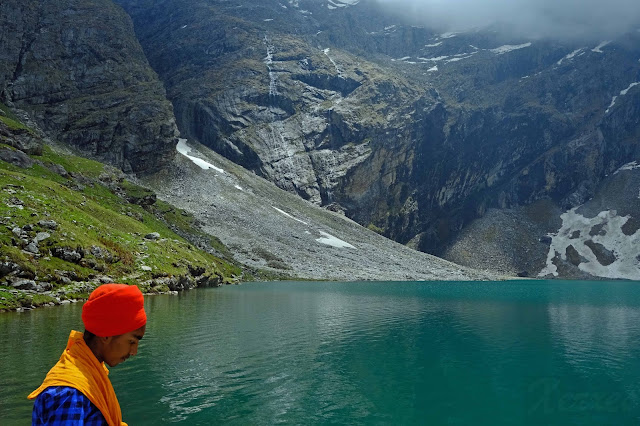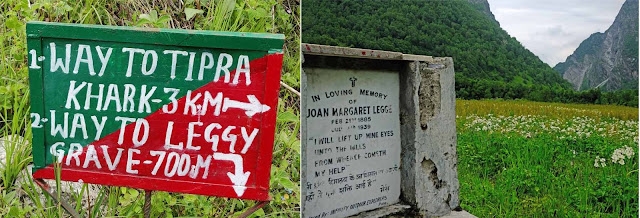
|
|
This graffiti on a rock atop Chandrashila says it all. As I found, it is not about the sunrise, it is about simply being there. Truly a communion with the Gods. |
Tuesday 10 July 2018
Tungnath and Chandrashila - Communion with the Gods
Wednesday 4 July 2018
Hemkund Sahib Revisited
 |
| The Journey begins at Govindghat which is a 9-10 hour bus ride from Rishikesh. There are many ways to do it, by taxi (expensive), shared taxi, small bus; and one can break the journey or do it at one go. I spent the night at Srinagar and so had a shorter journey to Govindghat the next day., here I spent the night so that I could start my walk early next morning. I have been to this region before and both times have combined a pilgrimage to Hemkund Sahib with hikes to the Valley of Flowers. My blog to the Valley of Flowers this year is placed here. For a blog of my previous hikes please see Valley of Flowers and Hemkund -a Trek to Paradise ; the photographs I took are at Valley of Flowers , and at The Flora Around Hemkund. |
Sunday 1 July 2018
Who Says There are No Flowers in the Valley of Flowers?
 |
| A sign at the Entrance to the Valley of Flowers (VoF) says it all The passionate forest guard at the gate told me that he had been scolded by a senior officer that the VoF had no flowers, and that he, the forest guard, should put up a sign warning everyone so. The experience I had was entirely different, I saw a myriad flowers blooming and a tranquil Valley. And I thought to myself that: they are really blind those who will not see. These flowers were very different to to those I had seen on my earlier trip in August 2015, view my photographs of the earlier trip at the link here and my blog of that trip over here |
Labels:
blue poppy,
Blue Whistling Thrush,
flowers,
forest,
ghangariya,
griffon,
Hemkund,
Joan Margaret Legge,
mountains,
pika,
Pushpawati River,
Tipra Khark,
valley of Flowers,
variegated laughing thrush
Saturday 12 May 2018
Off the beaten track in Satpura
 |
| “We all have forests on our minds. Forests unexplored, unending. Each one of us gets lost in the forest, every night, alone.” ― Ursula K. Le Guin, The Wind's Twelve Quarters Alas, it is difficult to get lost in a forest in India, there are few unexplored forests left and it is difficult to be alone. However the Satpura Tiger Reserve is one such forest where the crowds are less and the resorts are sensibly made to merge into ambient nature. Our welcome by a leopard by the side of the road as we drove in at night was a wonderful precursor of the two days ahead. The haughty animal, disdainfully looked at us and slowly walked away into the jungle. Here is where we let go of our daily electronic cocoons and freed ourselves to the joys of simply being at one with nature. |
Labels:
animals,
asian paradise flycather,
binoculars,
birds,
gaur,
grey langur,
leaf bird,
mottled wood owl,
naturalist,
nature,
photography,
Reni Pani,
Savannah nightjar,
sloth bear,
waterhole,
white eyed eagle,
wild boar
Monday 9 April 2018
Another Time Another Place
Labels:
Bhuigaon,
climb,
cobbler,
fisherfolk,
fishermen,
heat,
labour,
local folk,
Matheran,
milk carrier,
women,
working
Subscribe to:
Posts (Atom)


















































